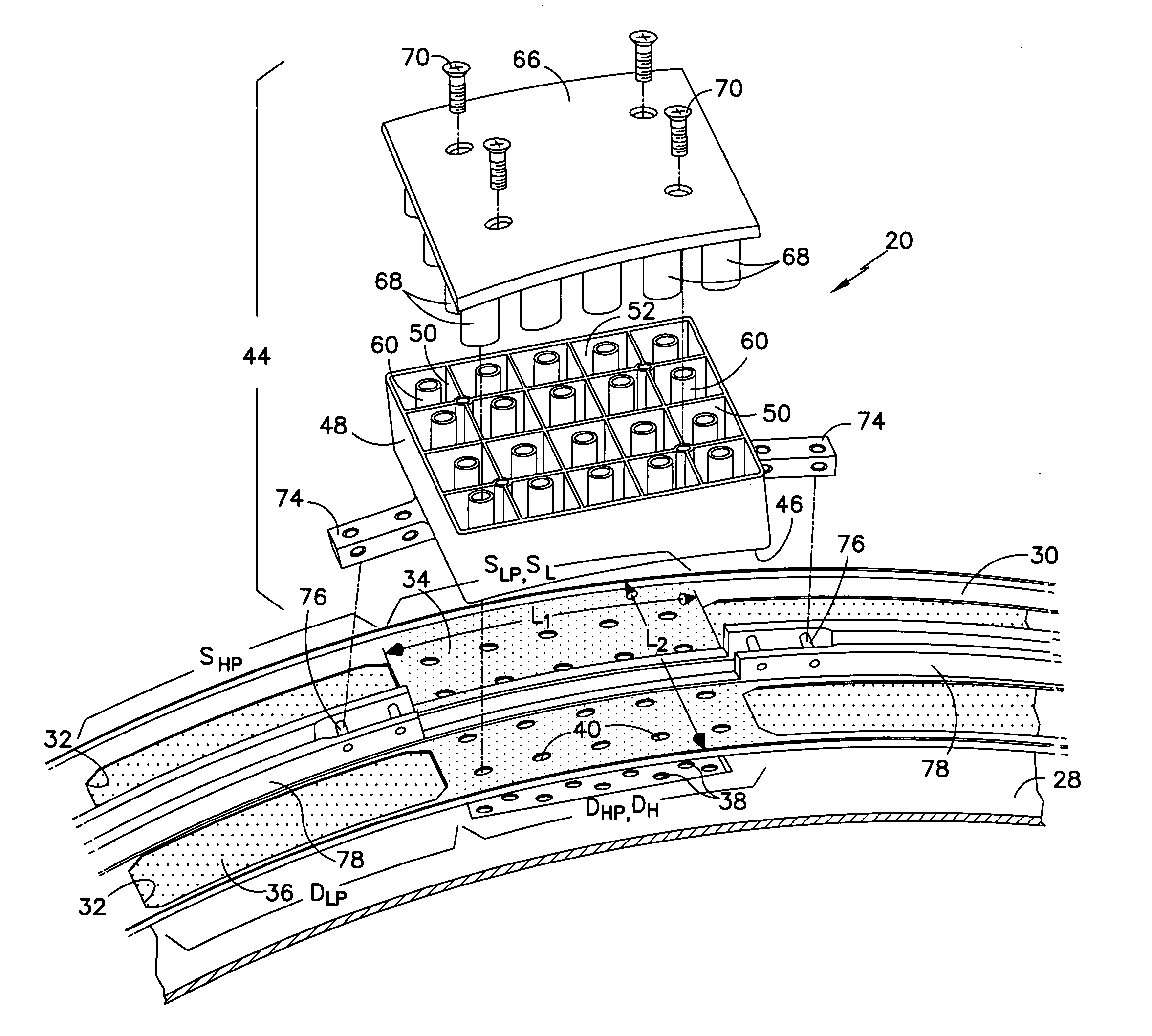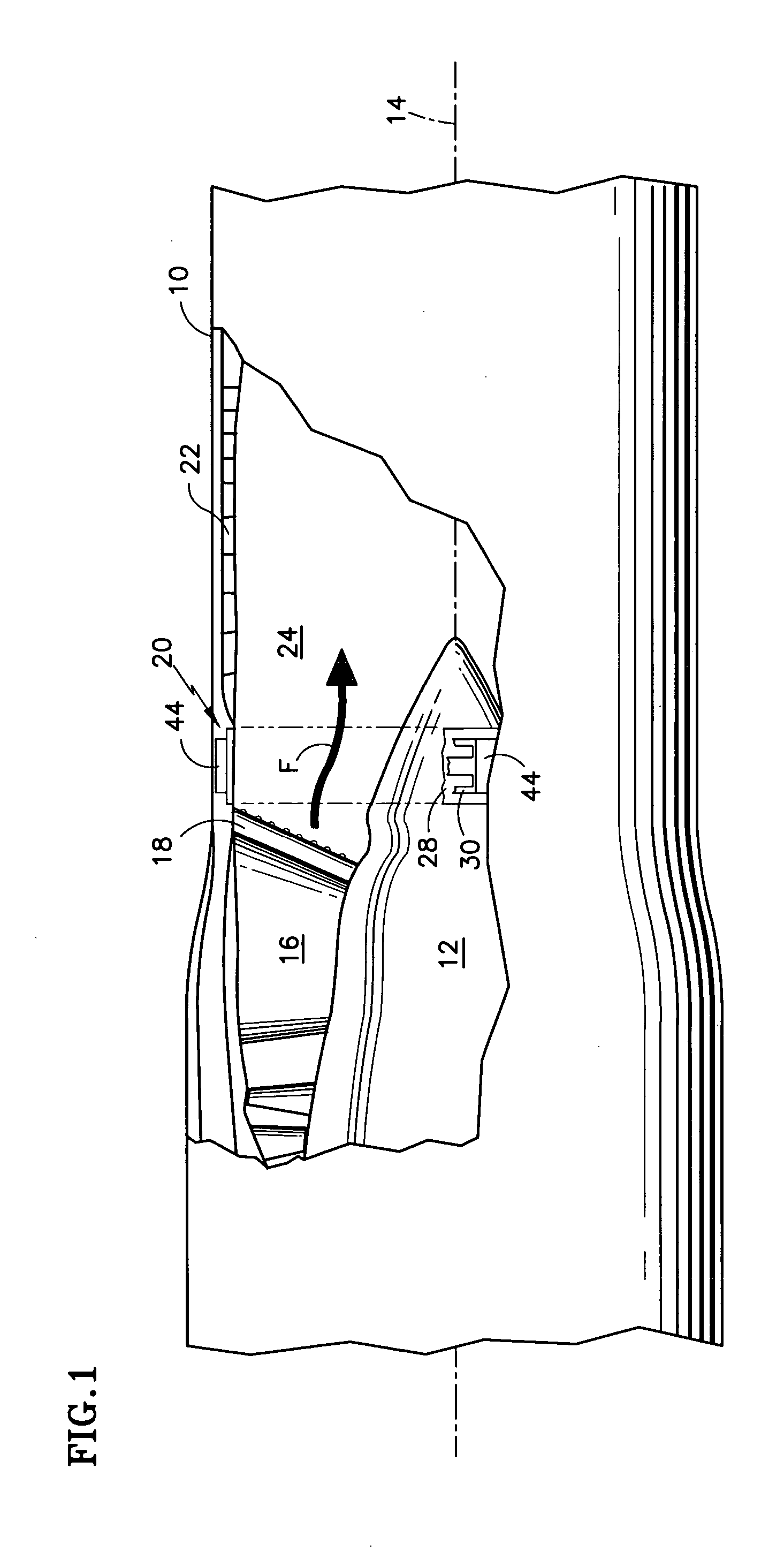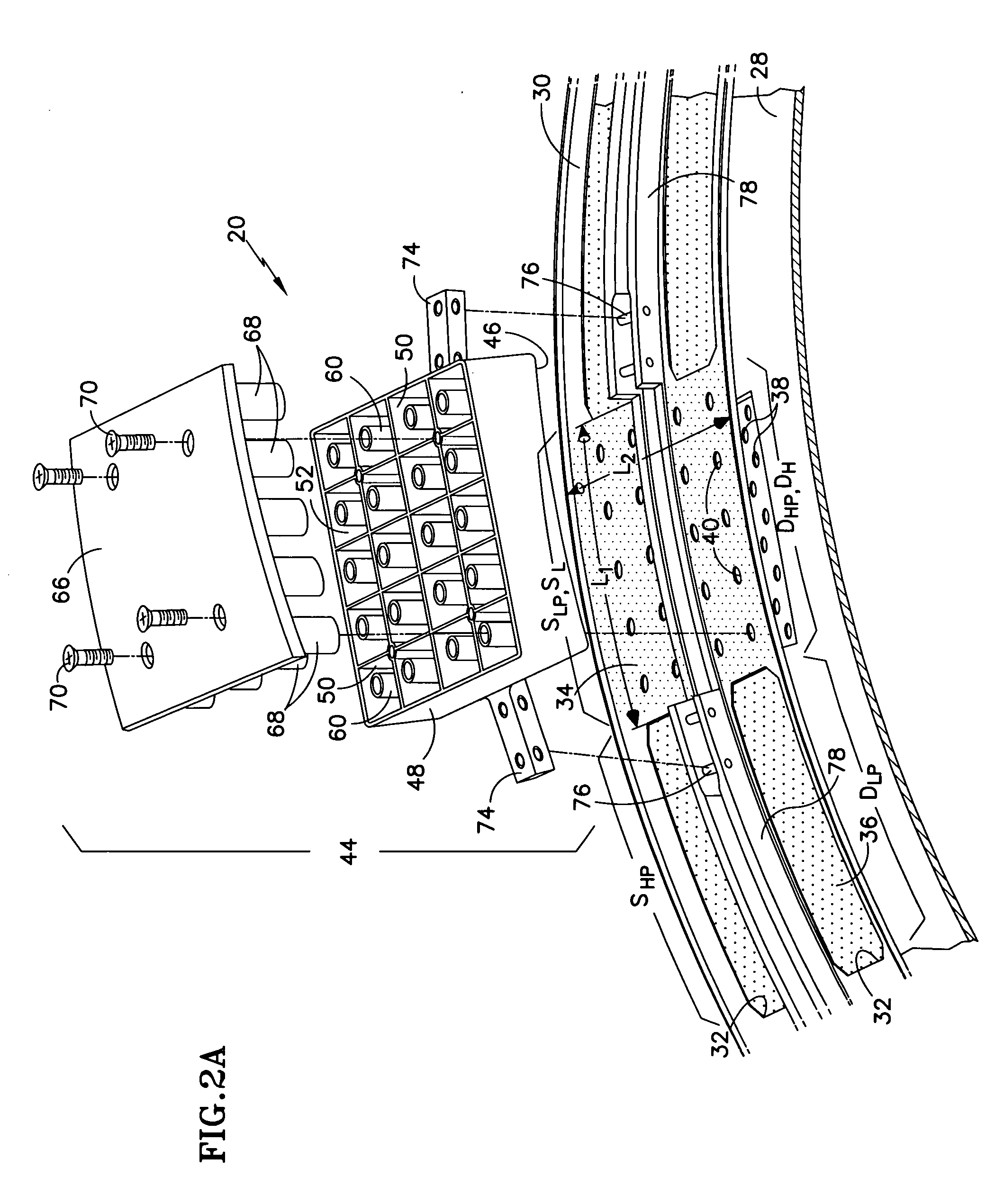High admittance acoustic liner
a high-admission, acoustic liner technology, applied in the field of acoustic liner, can solve the problems of reducing the acoustic admittance of the resonator, degrading the acoustic admittance, and attenuating noise, so as to improve the acoustic admittance, and the effect of high-admission
- Summary
- Abstract
- Description
- Claims
- Application Information
AI Technical Summary
Benefits of technology
Problems solved by technology
Method used
Image
Examples
Embodiment Construction
[0026] Referring to FIGS. 1 and 2A, an afterburning, variable cycle gas turbine engine for a high performance aircraft includes an outer case 10 and an internal centerbody 12 circumscribing an engine axis 14. The engine internal components also include an array of circumferentially distributed turbine exhaust vanes 16, an afterburner flameholder 18 integral with each vane 16, a modulated engine cooling (MEC) module 20, and an afterburner duct 22. A working medium flowpath 24 extends axially along the length of the engine. During engine operation, a fluid stream F comprising hot combustion gases flows through the vane array 16, the MEC module 20, and the afterburner duct 22. When the aircraft pilot selects afterburning operation, the engine fuel system introduces fuel into the combustion gases in the vicinity of the flameholder. The combustion gases ignite the fuel to produce additional thrust.
[0027] A pre-existing MEC module 20 includes an MEC duct 28 and an MEC strap 30 encircling...
PUM
 Login to View More
Login to View More Abstract
Description
Claims
Application Information
 Login to View More
Login to View More - R&D
- Intellectual Property
- Life Sciences
- Materials
- Tech Scout
- Unparalleled Data Quality
- Higher Quality Content
- 60% Fewer Hallucinations
Browse by: Latest US Patents, China's latest patents, Technical Efficacy Thesaurus, Application Domain, Technology Topic, Popular Technical Reports.
© 2025 PatSnap. All rights reserved.Legal|Privacy policy|Modern Slavery Act Transparency Statement|Sitemap|About US| Contact US: help@patsnap.com



